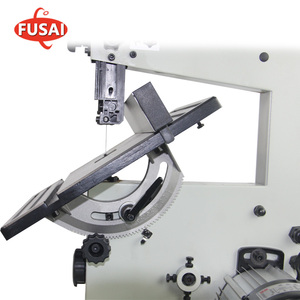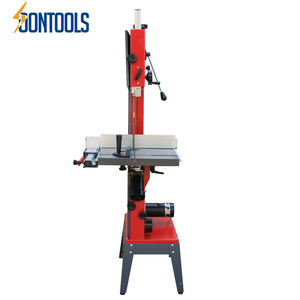(4578 products available)













































































































































 Ready to Ship
Ready to Ship












































































A timber band saw is a type of saw machine used to cut timber into planks, boards, and beams for construction and other purposes. Several types of timber band saws exist based on size, capacity, structure, working principle, and application.
Timber band saws are used to cut large logs into smaller, more manageable pieces of lumber. This is the primary use of a timber band saw. However, timber band saws can also be used for various applications.
In addition to the above, band saws can also be used to make bookmatching pieces of lumber, cut logs into circular blanks, and trim down to size rough sawn lumber, among other applications. It is worth noting that band saws are versatile tools and can be used to make precise cuts in various materials, not just wood.
Here are some critical factors to consider when buying a band saw for timber with a guide or purchasing a band saw machine in bulk for sale as retail stock.
Materials and Build Quality
Seeking out saws constructed from high-quality materials, such as heavy-gauge steel for the frame or the aluminum used in table manufacture, is a great idea. Such band saws will offer strength, stability, and resistance to vibrations, resulting in accurate cuts.
Cutting Capacity
Ideally, the cutting capacity of the band timber saw should be able to accommodate the intended use. Therefore, it's essential to keep in mind the maximum width and height of the material that is to be cut. Be sure that the machine can handle materials' dimensions.
Power and Motor
Opt for saws with powerful motors that possess sufficient power to tackle cutting tasks. When the motor is powerful, there is minimal risk of a drop in speed or the saw stalling while cutting through hardwoods that are known to be tough.
Blade Options
When making a purchase, it is advisable to consider band saws that provide a variety of blade options. This includes the number of teeth per inch (TPI) and the tooth shape. Having different blades allows for greater versatility in cutting tasks.
Dust Collection
It is essential to have effective dust collection mechanisms, such as built-in vacuum ports or dust chutes. These elements aid in keeping the work area clean and also improve visibility.
User-Friendly Features
User-friendly features to look for are adjustable speed controls, tool-free blade change mechanisms, and quick-release blade tensioners. These types of features simplify operation and enhance overall saw functionality.
Safety Features
Safety is an important consideration to have in mind when buying the band saw. It is ideal to use saws equipped with safety features such as blade guards, emergency stop buttons, and anti-kickback mechanisms. The presence of these features promotes safe operation and reduces the risk of accidents.
Reviews and Reputation
Before buying, it is advisable to research product reviews and the reputation of the manufacturer. This is vital, as it helps ensure the band saw's performance and longevity, as well as dependable customer support and service.
Q: What are the safety features of a band saw for timber cutting?
A: Modern timber band saws have many safety features. These include blade guards that cover the moving blades. The blades are fast-moving and can be a hazard. Other safety features are anti-kickback devices and emergency stop buttons. The emergency stop buttons let the operator stop the machine in a hurry. Some band saws have blade tracking alarms. They alert the operator when the blade moves off the cutting line. Timber band saws also have tension controls. Saws with proper blade tension work better and have less risk of breaking the blade.
Q: How does a band saw for timber cutting compare with other saws?
A: The band saw is a preferred timber-cutting tool. It is more accurate than circular and jig saws. Circular saws are better for making quick, straight cuts. A band saw can cut curves better than a circular and jig saw. Band saws also produce less waste. This is because the band saw blades are thin. The band saw cuts quickly even with the thin blades.
Q: What size of the band saw is suitable for cutting large timber?
A: Large band saws have bigger wheels and saw blades. They also have tall frames and powerful motors. Large saws cut big timber without overworking the motor. It cuts with more accuracy. Most specifications of a band saw show the max cutting height and capacity. This shows the largest size of timber the saw can cut. For very large timber that is up to 1-meter thick, extra-large band saws are suitable. These have a cutting capacity of over 1 meter.
Q: Can a band saw cut other materials besides timber?
A: No. The band saw cuts timber and other materials because of the blade it uses. Band saw blades for wood have fewer teeth per inch. Other blades have more teeth per inch. Band saws for metal also have hardened teeth. Many band saws have interchangeable blades. Users can change the blades to cut different materials.